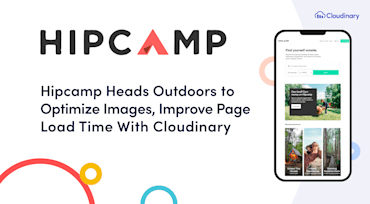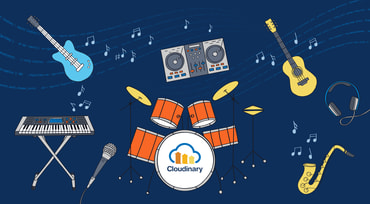Last month we unveiled a refresh of our website. As with all redesigns, there were numerous drivers behind the rollout. First and foremost, we’re a company that understands the power of visual storytelling, and the ways in which a website must beautifully and clearly convey a brand’s story and offerings. Our website needed to better reflect our brand and our solutions. This post highlights some of the thinking behind our changes.


Part 1 of this series introduces the Free Lossy Image Format (FUIF), which I recently developed. Part 2 explains the why, what, and how of FUIF. This post, part 3 of the series, delves into how FUIF is legacy friendly, which I alluded to in Part 2.

When creating a website that allows campers to discover great destinations, Hipcamp put a strong emphasis on featuring high-quality images that showcased the list of beautiful locations, regardless of whether users accessed the site on a desktop, tablet, or phone. Since 2015, Hipcamp has relied on Cloudinary’s image management solution to automate cropping and image optimization, enabling instant public delivery of photos, automatic tagging based on content recognition, and faster loading of webpages. In addition, Hipcamp was able to maintain the high standards it holds for the look and feel of its website.

Look around any software company and you're almost bound to see developers, headphones on, coding away to their favorite tunes. For most developers, music plays an important role in their lives: from listening to it while they work to attending concerts or major music festivals, like Coachella and South by Southwest Music Festival (SXSW).

In my last post, I introduced FUIF, a new, free, and universal image format I’ve created. In this post and other follow-up pieces, I will explain the why, what, and how of FUIF.
Even though JPEG is still the most widely-used image file format on the web, it has limitations, especially the subset of the format that has been implemented in browsers and that has, therefore, become the de facto standard. Because JPEG has a relatively verbose header, it cannot be used (at least not as is) for low-quality image placeholders (LQIP), for which you need a budget of a few hundred bytes. JPEG cannot encode alpha channels (transparency); it is restricted to 8 bits per channel; and its entropy coding is no longer state of the art. Also, JPEG is not fully “responsive by design.” There is no easy way to find a file’s truncation offsets and it is limited to a 1:8 downscale (the DC coefficients). If you want to use the same file for an 8K UHD display (7,680 pixels wide) and for a smart watch (320 pixels wide), 1:8 is not enough. And finally, JPEG does not work well with nonphotographic images and cannot do fully lossless compression.

I've been working to create a new image format, which I'm calling FUIF, or Free Universal Image Format. That’s a rather pretentious name, I know. But I couldn’t call it the Free Lossy Image Format (FLIF) because that acronym is not available any more (see below) and FUIF can do lossless, too, so it wouldn’t be accurate either.

Doug Sillars, a digital nomad and a freelance mobile-performance expert, answers questions about video streaming and delivery, website optimization, and more.
Doug Sillars, a freelance mobile-performance expert and developer advocate, is a Google Developer Expert and the author of O’Reilly’s High Performance Android Apps. Given his extensive travels across the globe—from the UK to Siberia—with his wife, kids, and 11-year-old dog, Max, he has been referred to as a “digital nomad.” So far in 2018, Doug has spoken at more than 75 meetups and conferences!

In May 2018, Cloudinary sponsored Capitol Music Group’s first hackathon held by its new Capitol360 Innovation Center, which aims at connecting musicians and software technologists to facilitate and stimulate the creation of music. See this interview for details. As a starter project for the hackathon, we built a sample app called Music Discovery Service.

Over the past several years, I've had a chance to participate in hackathons, as part of teams that developed a social payment app and helped users decide meals to cook. But it wasn't until last month that I got to experience a hackathon from the other side, as a judge.
